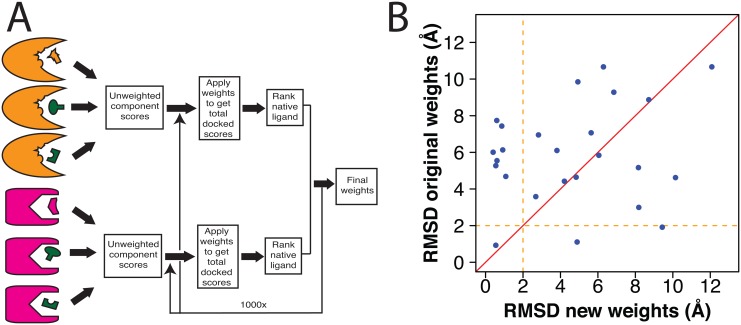Fig 3. Updated weight-fitting strategy.
(A) Schematic illustrating the strategy used in DARC 2.0 for determining values of the weights that should be applied to the terms in the DARC scoring function (Eq 1). For each complex used in training (S1 Table), we generate a large set of docked complexes involving either the cognate “native” ligand (orange/magenta) or one of many “decoy” ligands (green). Using the component energies in these complexes, we identify the set of weights that optimally ranks the native ligands ahead of the “decoys”. (B) For each protein-ligand complex in our set, we used DARC to dock the ligand back into its cognate receptor using either the original DARC weights or the newer weights derived though the approach described here. In the latter case, leave-one-out cross-validation was used to ensure the weights were not overfit to the training set. Each point represents a separate complex; points above the diagonal are those for which the new weights led to better pose recapitulation.

